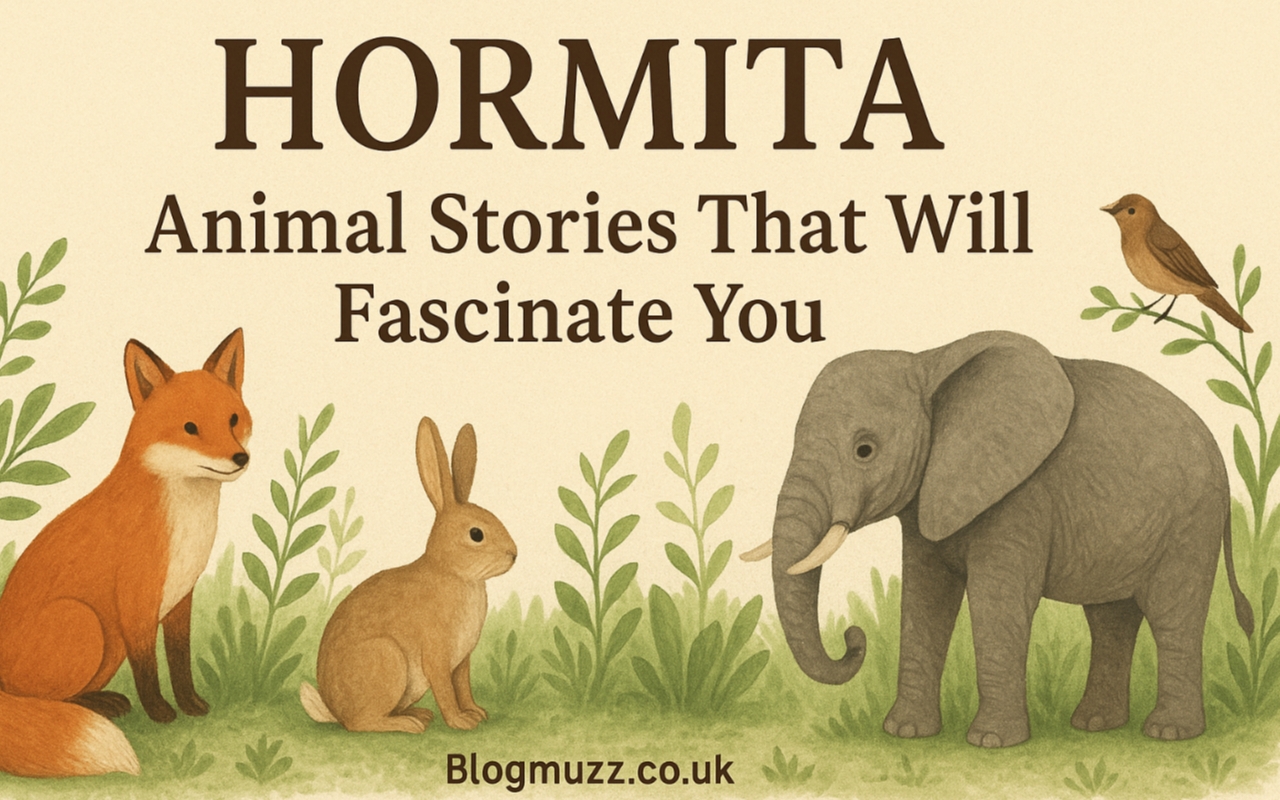Animals have always captured the imagination of humans. From their extraordinary abilities to their fascinating behaviors, the animal kingdom never fails to amaze. Among the many intriguing stories of wildlife and domesticated creatures, hormita has emerged as a keyword of curiosity, sparking interest in unique animal stories that both entertain and educate. This article explores the remarkable world of hormita, taking readers on a journey through captivating animal tales, rare behaviors, and the wonders of nature.
What is hormita and Why It Matters in Animal Stories
The term hormita has gained traction recently in the context of animal stories and nature exploration. While its origins may not be widely documented, its connection to fascinating animal narratives is undeniable. Hormita represents curiosity, discovery, and the untold stories that make the animal kingdom endlessly intriguing. Understanding hormita provides a lens through which we can appreciate the complex lives of animals, their interactions with ecosystems, and the lessons humans can learn from their behaviors.
In many ways, hormita reflects the idea of uncovering hidden aspects of animal life—stories that go beyond simple observation, revealing intelligence, empathy, and survival instincts in the wild. By exploring hormita-related animal stories, we gain insight into the adaptability and resilience of species across the globe.
Extraordinary Animal Intelligence Stories
Intelligence in animals is often underestimated. Many creatures display problem-solving abilities, emotional depth, and even creativity. Stories related to hormita frequently highlight these traits. For example, studies of crows, dolphins, and elephants reveal behaviors that are surprisingly complex. Elephants, in particular, exhibit mourning rituals for their dead, which demonstrates empathy and emotional awareness. Similarly, crows use tools, remember human faces, and solve puzzles that many would assume only humans could manage.
These narratives not only fascinate readers but also challenge our understanding of intelligence in the natural world. By observing these behaviors through the lens of hormita, we appreciate the richness of animal cognition and the stories that make each species remarkable.
Hormita in Animal Communication
Communication among animals is a fundamental aspect of survival and social structure. Hormita stories often focus on how animals convey information, express emotions, and form communities. For instance, whales are known for their complex songs, which can travel thousands of miles underwater. Bees perform dances to communicate the location of flowers, showcasing remarkable precision and teamwork. Even domestic animals like dogs and cats have evolved communication strategies that allow them to bond with humans and other animals.
Exploring these stories under the umbrella of hormita highlights the intricate networks and social intelligence that define animal societies, offering lessons on cooperation, empathy, and adaptation.
Rare and Endangered Animal Tales
Many hormita-related stories focus on rare and endangered species. Animals on the brink of extinction often display behaviors that are little known to humans. For example, the pangolin, often called the “scaly anteater,” has unique defensive mechanisms that help it survive predators. Similarly, the vaquita, one of the rarest marine mammals, represents a story of resilience in the face of environmental challenges.
These tales remind us of the fragility of life and the importance of conservation. Through hormita, readers are introduced to animals they may never see in real life, but whose stories leave a lasting impact, inspiring awareness and protective action.
Heroic Animal Stories That Inspire Humans
Animals often perform acts of bravery and loyalty that rival human heroism. Stories of rescue, protection, and selflessness are central to hormita narratives. Dogs saving their owners from danger, elephants defending their herd, or even birds warning humans of approaching threats exemplify this theme. These stories highlight that courage and intelligence are not uniquely human traits and that the animal kingdom is full of examples of perseverance and devotion.
By sharing these hormita-inspired tales, we gain a deeper respect for animals’ emotional and cognitive capacities, fostering empathy and connection across species.
Unusual Animal Friendships
Perhaps one of the most heartwarming aspects of hormita stories is the depiction of unusual friendships in the animal world. Animals often form bonds that defy expectations and challenge the traditional predator-prey dynamic. Stories abound of dogs befriending cats, elephants bonding with calves of other species, and even interspecies partnerships in the wild, such as dolphins guiding lost turtles to safety.
These narratives remind us of the power of companionship, trust, and mutual care in nature, showing that emotional depth is widespread across species and not limited to humans.
Hormita and Animal Parenting Tales
Parental care is one of the most fascinating aspects of animal behavior, and hormita often emphasizes these stories. From the devoted penguin parents who take turns incubating eggs in freezing climates to the extraordinary nurturing behavior of orcas and primates, animal parenting stories showcase dedication, intelligence, and problem-solving. These tales inspire admiration for the lengths animals go to ensure the survival of their young.
By exploring hormita-focused parenting stories, readers understand that nurturing instincts are universal and that animal families are complex, adaptive, and resilient.
Survival Strategies in the Wild
Survival in the wild requires ingenuity, adaptability, and sometimes cooperation. Many hormita stories focus on these strategies. For example, certain species of birds mimic the calls of predators to protect their nests, while some fish use camouflage and mimicry to avoid being eaten. Predator-prey interactions are full of clever tactics, demonstrating that life in the wild is a constant dance of intelligence, instinct, and adaptation.
These stories captivate readers and highlight the evolutionary brilliance of animals, illustrating why survival requires more than just physical strength—it demands creativity and awareness.
Lessons Humans Can Learn from hormita Stories
Beyond fascination, hormita stories carry important lessons for humanity. Observing animal intelligence, communication, and cooperation can inspire us to become more empathetic, adaptable, and environmentally conscious. For instance, stories of collective behavior among bees or altruistic acts among elephants teach humans the value of collaboration and compassion. Rare and endangered species remind us to protect nature and preserve biodiversity.
Through hormita, we recognize that animals are not just passive observers of life—they are active participants in ecosystems, and their stories provide valuable insights into resilience, intelligence, and connection.
The Future of hormita in Animal Storytelling
The popularity of hormita reflects a growing interest in storytelling that bridges science, entertainment, and education. Digital media, social platforms, and wildlife documentaries have made it easier to share captivating animal stories with a global audience. As conservation efforts grow and new discoveries are made, hormita will continue to serve as a lens for exploring the extraordinary narratives of the animal kingdom, inspiring curiosity, awareness, and respect for all creatures.
Conclusion
Hormita has become a gateway to exploring the rich, complex, and often surprising world of animals. From intelligence and communication to survival strategies and emotional bonds, the animal kingdom is full of stories that educate, inspire, and fascinate. By following hormita-focused narratives, readers gain a deeper understanding of nature, empathy for other species, and a sense of wonder that only the animal world can evoke. Whether it’s a heroic rescue, a rare endangered species, or a unique interspecies friendship, hormita reminds us that every creature has a story worth telling.



